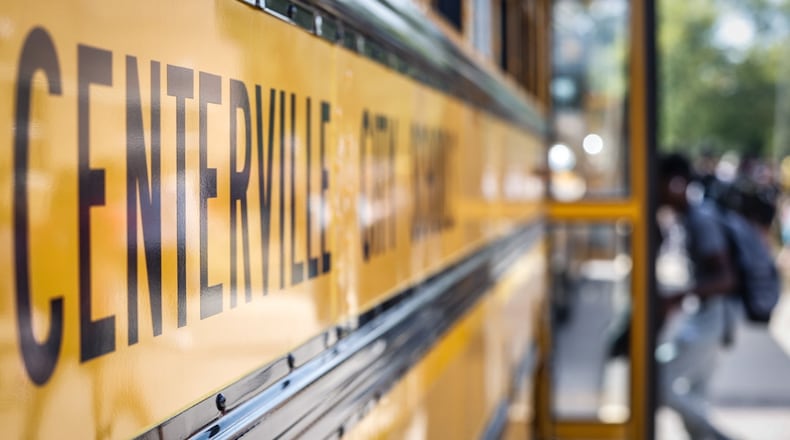The first set of cuts will be made regardless of the levy outcome, and the district estimates they will save $1.27 million in 2024-25. They include four teacher cuts (1 math, 1 science, 1 special ed and 1 phys ed) plus 10.5 others (5 special ed aides, 2 custodians, 2.5 clerical positions and a bus driver).
Wesney said some of the positions Centerville will eliminate are those of staffers who have already retired or resigned or may retire or resign soon.
“Phase one of the reductions is really looking at retirements and resignations and how we can focus on that area to reduce some of our costs,” he said.
Savings will also be made by “hiring essential staff at lowest starting salary to replace retiring staff,” and increasing preschool tuition by 10% for typically developing students, among other steps.
The second “only if the levy fails” cuts for 2024-25 are anticipated to save an additional $1.62 million if needed, the district said. Those reductions include 10 teachers, half of them at the elementary school level, five special education teacher aides, 11 clerical positions and 75% of a school counselor position.
In addition, school fees would increase $50-$75, and pay-to-participate fees would rise 20%, among other moves.
The plan is subject to change based on “additional retirements and resignations, changes to enrollment, or other circumstances,” district officials said. Any changes will be presented to the board and community.
The district’s teacher contract expires this June. Asked whether the district would consider adjusting wages rather than cutting positions, Wesney said union negotiations are ongoing, but “we have to make some reductions now as a way of (saving) now because we’re back on the ballot in March.”
In November, voters rejected a permanent 5.9-mill additional tax levy by a nearly 57-to-43 ratio. In that levy, which would have raised $12.9 million per year, 5.4 mills would have paid for day-to-day operating expenses for the district, and 0.5 mills would have gone to permanent improvements.
In December, the Board of Education approved a resolution to place a 3.9-mill levy on the ballot on March 19. The levy is for operating expenses only and, if approved, will generate $11.2 million annually and cost a homeowner $139 for each $100,000 of appraised value, per the county auditor’s office.
“The current funding model in Ohio puts Centerville on a guaranteed amount of state funding, creating an over-reliance on local property taxes,” the district said. “Like many districts in Ohio, Centerville City Schools must return to voters to ask for approval of additional operating revenue. Voters last approved additional funding in November 2019.”
Wesney said after voters rejected the November levy, the district had conversations with staff about no overtime, and not hiring subs for some clerical positions and eliminating or reducing field trips as ways to start saving money for the district. ”We have not hired positions back in areas where we can maybe hold off for a period of time or at least the next fiscal year to save money,” he said.
The district said it will achieve savings through hiring new people for some of the entry-level positions at a lower salary.
“It really has an impact on services and the overall quality of programs that we are providing to our students, and the biggest impact would be in class sizes,” Wesney said. “You have more kids in a class, it’s a bigger challenge for our teachers.”
About the Author

